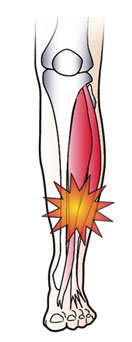Many patients who experience heel pain make the assumption that it’s nothing to worry about and will go away only by resting. Nevertheless, in some cases the heel pain is a red flag for a condition that needs medical treatment. Foot malformations such as overpronation due to flat feet can lead to more serious conditions such as plantar fasciitis. This often crippling pain in the heels can be treated in a operating room as an outpatient.
Effective Plantar Fasciitis Treatment Is Readily Available
As reported by the American Podiatric Medical Association, plantar fasciitis can be caused by congenital malformations and step patterns. This can include overpronation and flat feet. When the feet and leg biomechanics are out of step with the rest of the lower body, excessive stress and pressure are placed on bones and ligaments of the feet that are not intended to absorb those stresses. For example, running on a hard surface or even being overweight can all be contributing factors for heel pain.
Solutions and Plantar Fasciitis Treatment
A surgical option called Instep Plantar Fasciotomy is one plantar fasciitis treatment that is done under ankle block anesthesia, while the patient is awake but the foot is numbed. The plantar fascia is a ligament of tissue that is responsible for the excruciating discomfort caused by this condition. The surgeon opens the heel through a small incision made above the affected area of the heel. The fluid-filled area and damaged tissue is extracted from the inflamed heel tissues. Once the wound is closed, a walking cast is recommended to be used for about four to six weeks, depending upon the patient’s recovery time.
Plantar Fasciitis Treatment Doesn’t Always Have to Mean Surgery
A type of cutting-edge technology being used today to heal foot conditions is using waves of low-level sound. Denominated extracorporeal shock wave therapy (ESWT), this solution aims to use low-dose sound waves to eliminate the affected tissues. It Is apparently counterintuitive, but it isn’t. The partial destruction of these tissues in small amounts actually ignites the body’s healing response and heals the affected tissues. In a study done in the early part of this decade, it took 800 study participants about two months to heal completely with about 85% success.
Cut Healing Time Dramatically with this Plantar Fasciitis Treatment
Lastly, shorter down time can be achieved with treatment of plantar fasciitis if an endoscopic procedure is performed. In this surgical solution, the foot is numbed with an ankle block while the patient is conscious. Given that some doctors may prefer to use a general anesthesia, that is also a valid way to conduct the procedure with reduced stress to the patient. Small slits are made in the left and right sides of the heel to access the affected areas. A camera is used to aid the doctor to find the plantar fascia ligament. Once it has been identified, it is surgically fixed so that it can heal properly.
Excess Pronation and Flat Feet Can be Treated Before it Turns Into Plantar Fasciitis
Although surgical intervention is only necessary in under 10% of the cases of heel pain from plantar fasciitis, it’s recommended to be up to date on the procedures that podiatrists are using today. Continuing with PT (physical therapy) is one of the best things patients can do after undergoing any of these procedures. Massages, exercises, and whirlpool therapy are just some of the many tools in the physical therapist’s toolbox that can help. For patients with walking gait deformities and biomechanical issues such as overpronation or flat foot, supportive orthotic insoles are advised to avoid the return of this painful condition.



 100% Secure
100% Secure People who regularly exercise or play organized sports are at risk for shin splints, knee pain, Achilles tendonitis, and other lower body injuries. Medial tibial stress syndrome, as shin splints are referred to by the Mayo Clinic, is a pain that runs down the length of the shin bone and is caused by too much stress on the bones, muscles, and ligaments of the lower part of the leg. This stress is caused by running activities in any setting and can be aggravated by flat feet and insufficient foot arch support.
People who regularly exercise or play organized sports are at risk for shin splints, knee pain, Achilles tendonitis, and other lower body injuries. Medial tibial stress syndrome, as shin splints are referred to by the Mayo Clinic, is a pain that runs down the length of the shin bone and is caused by too much stress on the bones, muscles, and ligaments of the lower part of the leg. This stress is caused by running activities in any setting and can be aggravated by flat feet and insufficient foot arch support.
